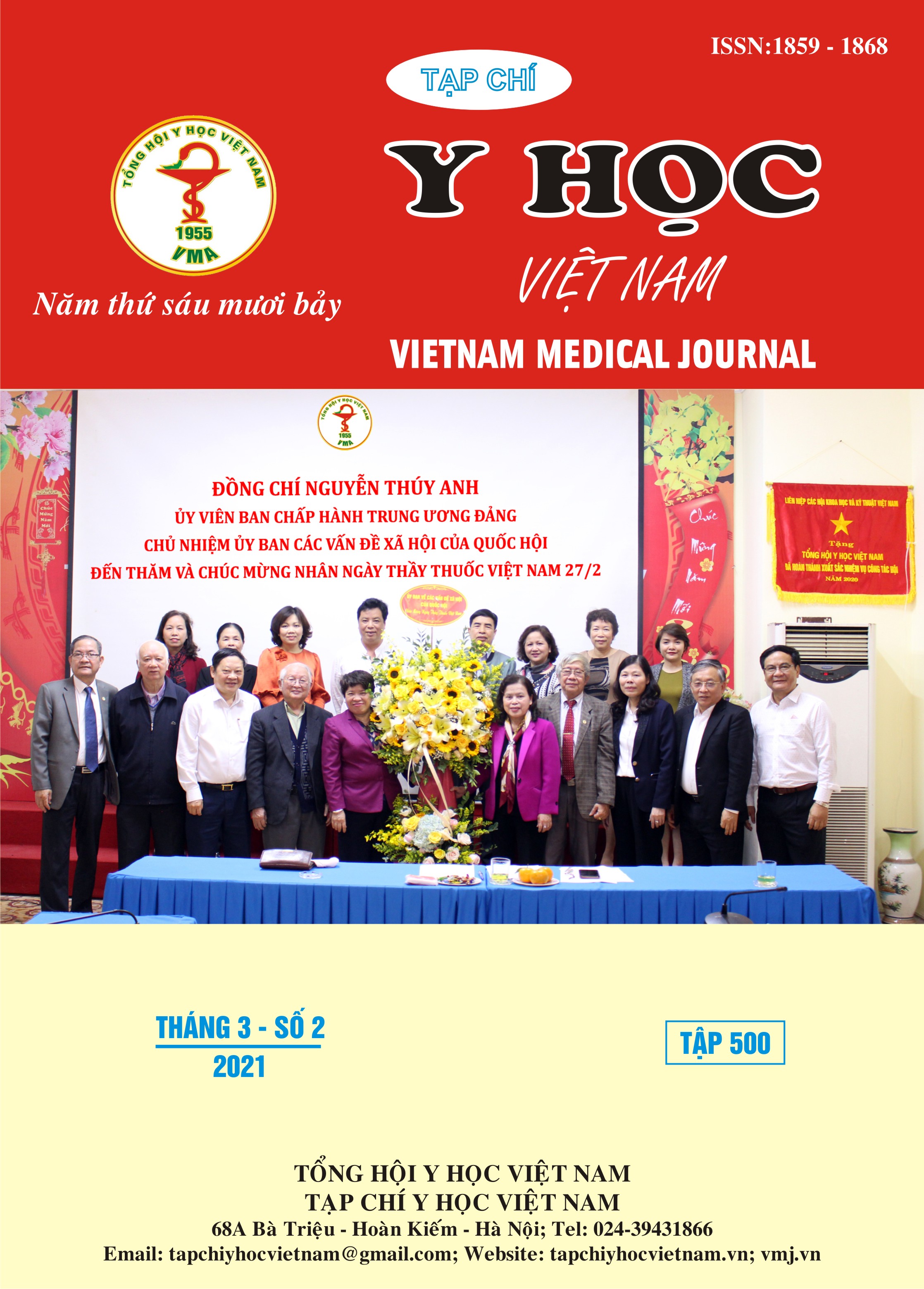INVESTIGATION OF COLISTIN USE AT THE DONG NAI GENERAL HOSPITAL
Main Article Content
Abstract
Objective: This study was thus conducted to analyze the use of colistin and nephrotoxicity characteristics. Study population and methods: A descriptive cross – sectional study was conducted on 112 patient medical records over 18 years old who used colistin at least 3 days and indicated colistin from June 1st 2019 to December 31th 2019 at Dong Nai General Hospital. Patient medical records were collected for data analysis including characteristics of the study population, microbiologic characteristic, antibiotic use, rationality, nephrotoxicity, potential risk factors for colistin-induced nephrotoxicity. Results: The median age of the study population was 65 and 56.3% of the population was male. The respiratory department (35.7%) for the most cases of colistin use, over 97% of patients had pneumonia. A.baumannii were the most common isolated organism (53.48%). Resistance rates of colistin to A.baumannii, P.aeruginosa and K. pneumonia were 2.2%, 4% and 4.8%, respectively. The average cumulative colistin dose during the course of treatment was 76.43 ± 44.97 MUI. The combination of two antibiotics (66.5%) was the most dominant regimen. Colistin plus meropenem was the most frequently combination administered (39.29%). Loading dose was observed 39.28% of cases. Only 17.86% of cases was found to be rationally indicated. Nephrotoxicity was observed in 41.5%. Conclusion: The rate of appropriate indication of antibiotic was relatively low, there were strains of bacteria resistant to colistin. It is necessary to prescribe rationally, prevent resistant strains and minimize the rate of nephrotoxicity for patients.
Article Details
Keywords
Colistin, resistance, gram negative, nephrotoxicity
References
2. Kalil A.C. et al. Management of adults with hospital acquired and ventilator-associated pneumonia. Infectious Diseases Society of America and the American Thoracic Society. 2016; 63(5):4-39.
3. Nation R. L. et al. Updated US and European Dose Recommendations for Intravenous Colistin: How Do They Perform?. Clin Infect Dis. 2016; 62(5):552-558.
4. Lopes J. A., Jorge S. The RIFLE and AKIN classifications for acute kidney injury: a critical and comprehensive review. Clinical Kidney Journal. 2013; 6(1):8-14.
5. Vũ Hồng Khánh, Nguyễn Thị Huyền, Vũ Đình Hòa. Phân tích việc sử dụng colistin tại Trung tâm Gây mê và Hồi sức ngoại khoa Bênh viện Viêt Đức. Tạp chí dược học. 2018; 504(58):7-10.
6. T.C. Bang, D.N.D. Trang. Investigation on colistin use at the University Medical Center Hochiminh City. Pharm Sci Asia. 2018; 45(1):37-44.
7. Nguyễn Hương Trà, Nguyễn Tuấn Dũng. Khảo sát việc sử dụng colistin tại bệnh viện nhân dân 115. Tạp chí Y Học Tp. HCM. 2020; 24(2):68-71 .
8. Koksal I. et al. Evaluation of Risk Factors for Intravenous Colistin Use-related Nephrotoxicity. Oman Med J. 2016; 31(4):318-321.


